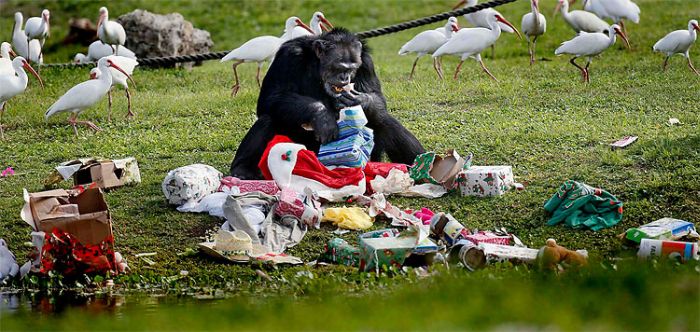|
|
Christmas With The Chimps, Lion Country Safari, Loxahatchee, Palm Beach County, Florida, United States
|
Laughter in apes
Laughter might not be confined or unique to humans. The differences between chimpanzee and human laughter may be the result of adaptations that have evolved to enable human speech. Self-awareness of one's situation as seen in the mirror test, or the ability to identify with another's predicament (mirror neurons), are prerequisites for laughter, so animals may be laughing in the same way that humans do.
Chimpanzees, gorillas, and orangutans show laughterlike vocalizations in response to physical contact, such as wrestling, play chasing, or tickling. This is documented in wild and captive chimpanzees. Common Chimpanzee laughter is not readily recognizable to humans as such, because it is generated by alternating inhalations and exhalations that sound more like breathing and panting. There are instances in which non-human primates have been reported to have expressed joy. One study analyzed and recorded sounds made by human babies and Bonobos when tickled. It found that although the Bonobo's laugh was a higher frequency, the laugh followed a pattern similar to that of human babies and included similar facial expressions. Humans and chimpanzees share similar ticklish areas of the body, such as the armpits and belly. The enjoyment of tickling in chimpanzees does not diminish with age.
|
|









